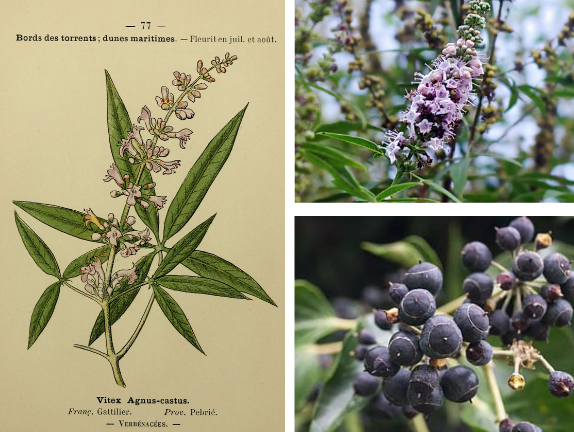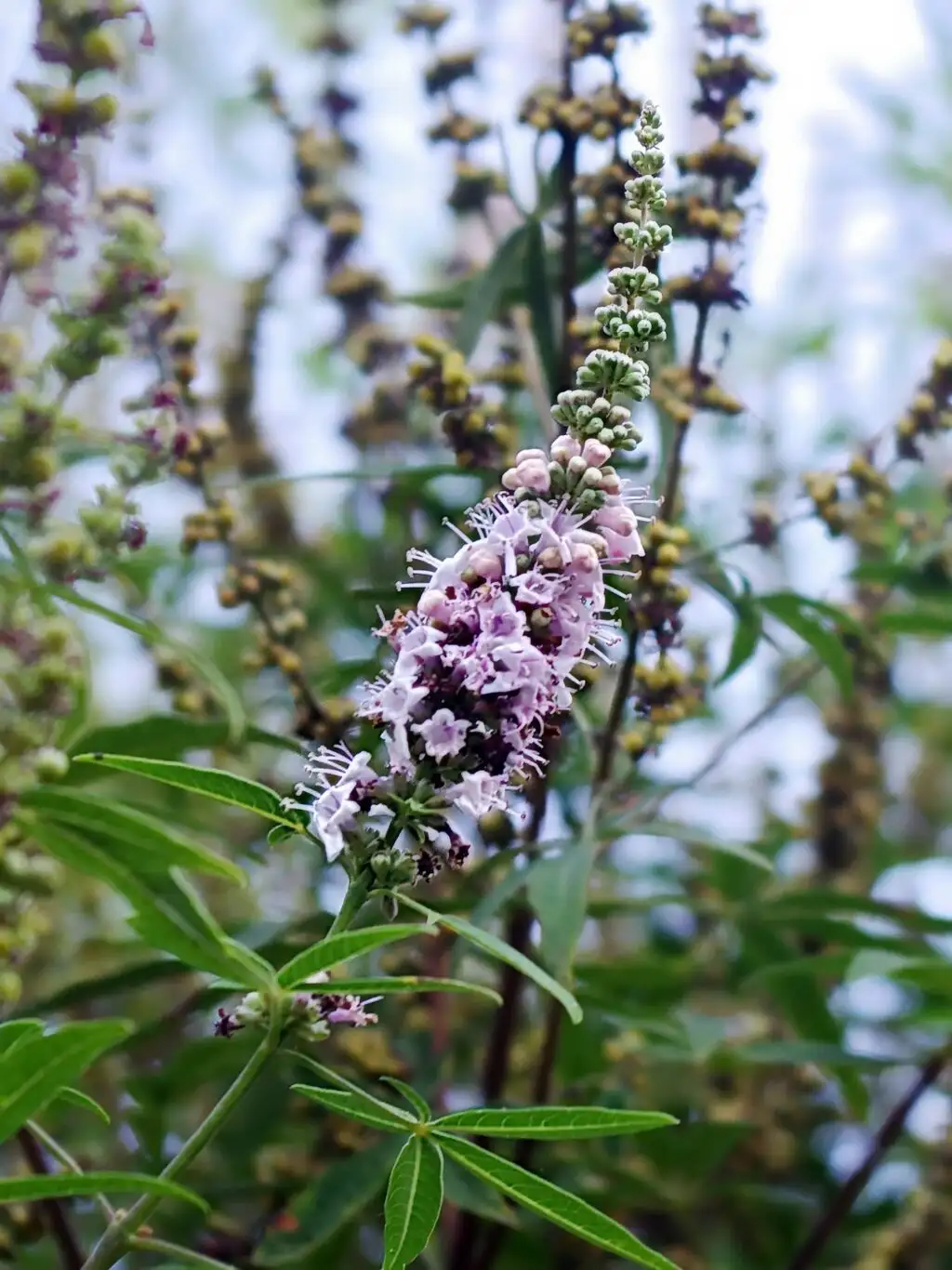Vitex agnus-castus
Latin Name: Vitex agnus-castus
Herb Class/Action: Hormone Modulator, Uterine Tonic, Diaphoretic
Parts Used: Fruit
Flavors: Pungent, acrid, mildly bitter
Energetics: Mildly warming and drying
Traditional Benefits: Hormone support, menstrual cycle support, women’s health support, libido support, liver support, skin support
This hormone modulating, cycle-supporting herb is primarily used to balance and regulate in the lens of reproductive health.*
Native to the Mediterannean region, Chaste Tree Berry (aka Vitex) has been a part of traditional medicine since at least Ancient Greece — we’re talking more than 2,000 years ago. Traditional uses included the promotion of healthy lactation along with supporting balance and regulation for a healthy menstrual.
To this day, Vitex is primarily used to support women’s health. Preliminary trials support this herb’s use in reproductive health, suggesting this spicy berry is helpful for hormone balance, along with the occasional discomfort that is oh so common during the menstrual cycle.

At the root of these issues (along with occasional shifts in mood and libido) is commonly a skewed ratio of progesterone to estrogen. Vitex acts directly on the HPAOT axis, supporting the P (pituitary) from the top down, helping to create balance in the O (ovaries) via healthy levels of progesterone and estrogen through the HPAOT’s negative feedback loop.
Chaste Tree definitely requires patience (maybe that’s where the name actually comes from)—usually needing to be used for 3+ menstrual cycles for full effectiveness. That doesn’t necessarily mean it’ll take three months to notice any effects whatsoever, just that it’ll be most beneficial after consistent, long-term use.*
Rumor has it, the name “chasteberry” came from the traditional belief that monks in the Middle Ages used it to decrease sexual desire. And yet, Greek philosopher and naturalist Plato noted the exact opposite, describing the herb as an aphrodisiac.

